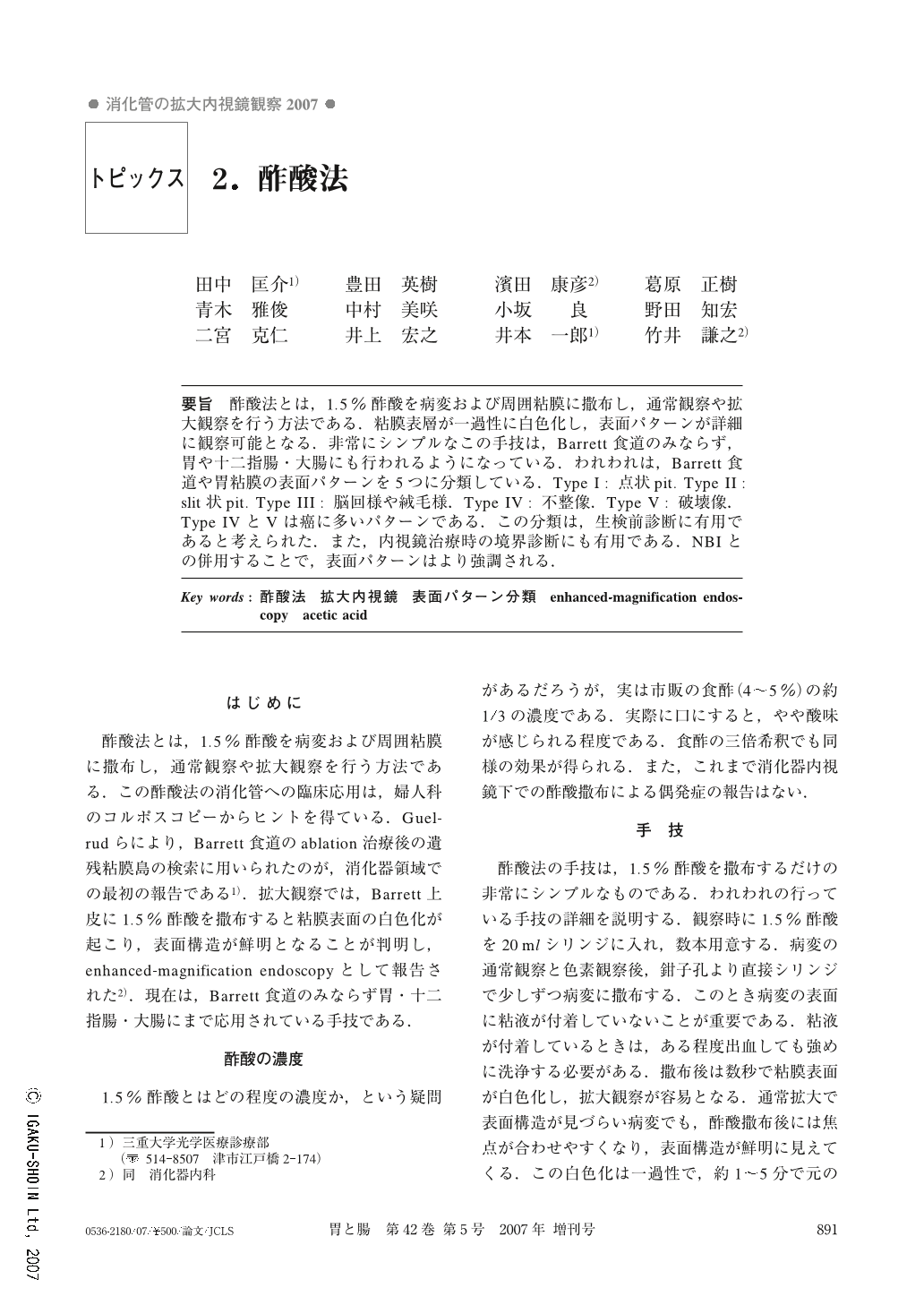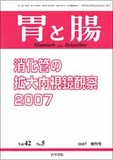Japanese
English
- 有料閲覧
- Abstract 文献概要
- 1ページ目 Look Inside
- 参考文献 Reference
- サイト内被引用 Cited by
要旨 酢酸法とは,1.5%酢酸を病変および周囲粘膜に撒布し,通常観察や拡大観察を行う方法である.粘膜表層が一過性に白色化し,表面パターンが詳細に観察可能となる.非常にシンプルなこの手技は,Barrett食道のみならず,胃や十二指腸・大腸にも行われるようになっている.われわれは,Barrett食道や胃粘膜の表面パターンを5つに分類している.Type I:点状pit.Type II:slit状pit.Type III:脳回様や絨毛様.Type IV:不整像.Type V:破壊像.Type IVとVは癌に多いパターンである.この分類は,生検前診断に有用であると考えられた.また,内視鏡治療時の境界診断にも有用である.NBIとの併用することで,表面パターンはより強調される.
Technique of enhanced-magnification endoscopy with acetic acid instillation is very simple. With 1.5% acetic acid, the surface of the mucosa becomes white and the fine surface pattern is able to be observed in detail. This technique is used for not only Barrett's esophagus but also for stomach, duodenum and colon. We classify the surface pattern of the Barrett's esophagus and the gastric mucosa into the following five types. Type I : small round pits of uniform size and shape. Type II : slit like pit. Type III : gyrus and villous pattern. Type IV : irregular arrangement of type I~III. Type V : destructive pattern of type I~III. It may be possible to diagnose early cancers using this classification even before biopsy. It is useful for demarcation line diagnosis, too. Furthermore, the surface pattern is observed more clearly by adding the use of the NBI system. Enhanced-magnification endoscopy with acetic acid instillation is a technique that should affract careful attention.

Copyright © 2007, Igaku-Shoin Ltd. All rights reserved.


